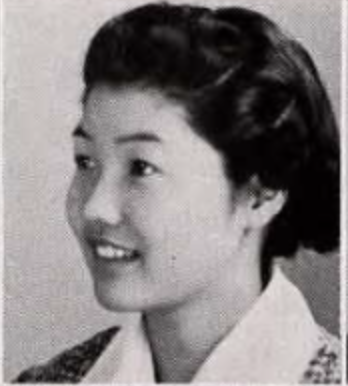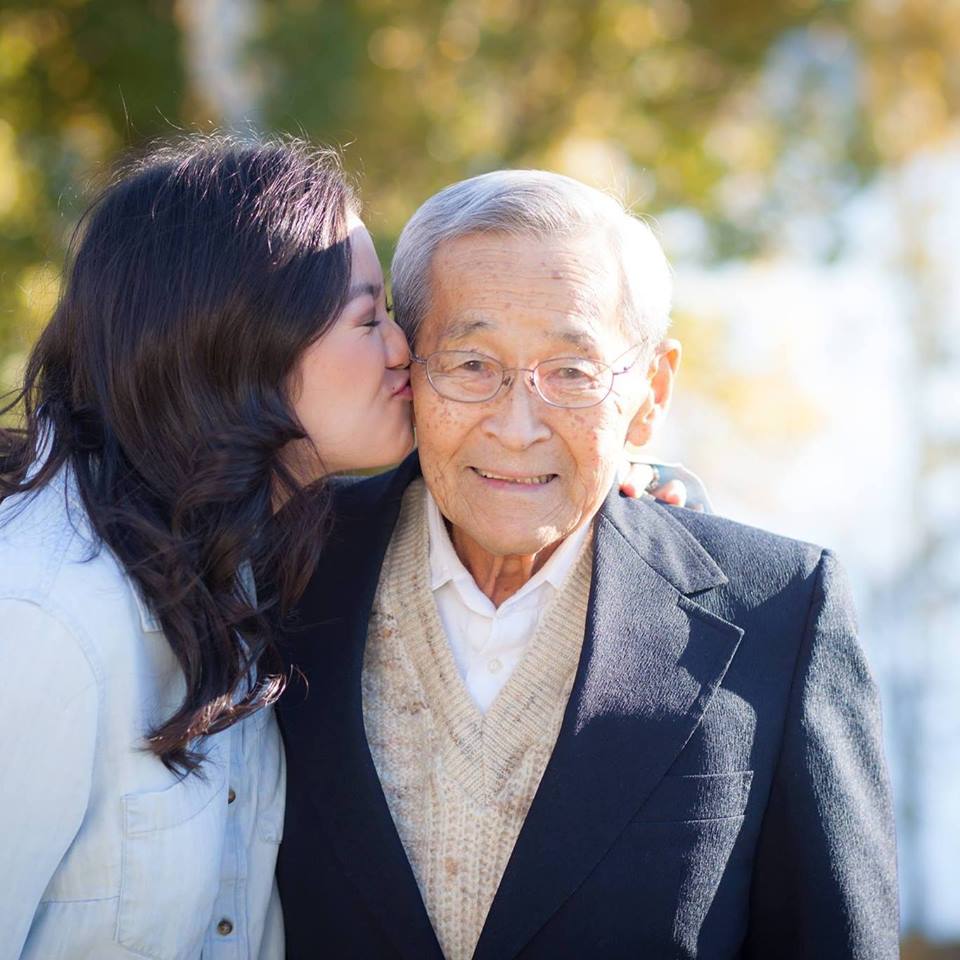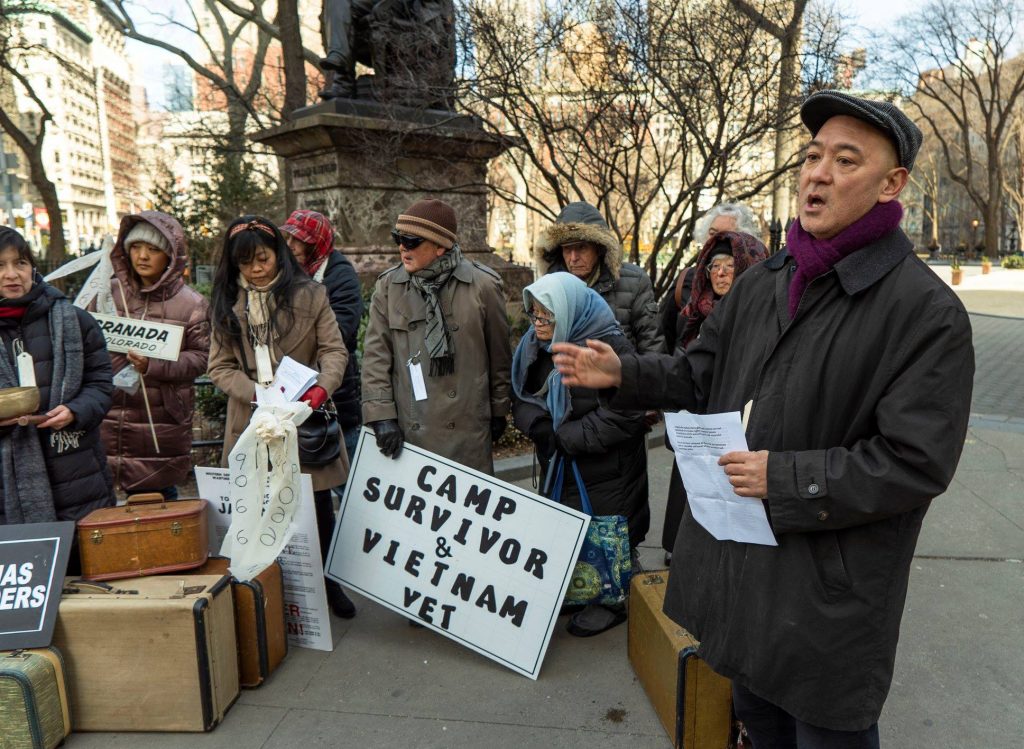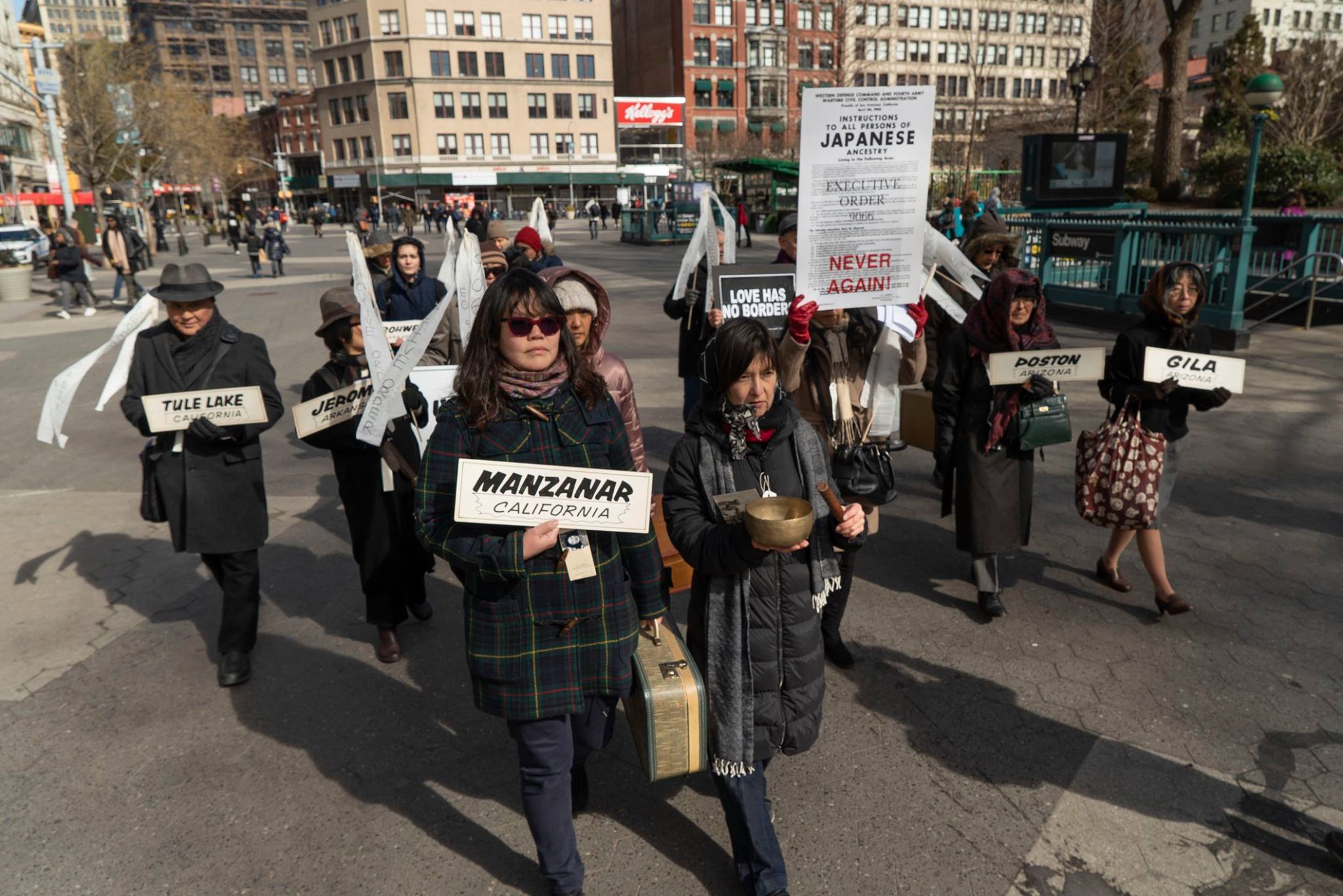February 25, 2019
Y’all killed it this Day of Remembrance. We were so moved to see all the DOR posts, pictures, and family stories you shared on social media. This is the work we do every day and it brings so much joy to see the creative and passionate ways you all carry the story too.
And, as it turns out, how we remember often inspires how we show up as advocates for justice today. Given our current political climate, it’s essential we keep the history of WWII incarceration alive and visible and we are so grateful to everyone committed to doing that work alongside us.
Here’s a roundup of some of the social media posts that gave us all the feels and left us inspired to continue speaking out. The folks included here are also engaged in a variety of scholarly and creative endeavors to keep the story alive so be sure to check out their work beyond these Instagram and Facebook posts:
Tsuya Yee (@nyc_dor), Co-chair New York Day of Remembrance Committee
“Today I had the chance to be brave — to walk and be seen in honor of my ancestors. On this windy Tuesday, Feb. 19, our community marked the 77th anniversary of the signing of Executive Order 9066 that authorized the forced removal and incarceration of 120,000 people of Japanese descent by the US government in 1942.”
(Tsuya is pictured above holding the Manzanar placard as part of the New York Day of Remembrance march, photo courtesy of Stan Honda.)
Erin Shigaki (@purplegatedesign), Designer, Activist, and Public Artist

“On this Day of Remembrance I recall both the joys and sorrows my people faced. Despite incalculable losses of life, dignity, and possessions, we persevered, found moments of happiness, rebuilt for the next generations and once again find ourselves embracing both the Japanese and American parts of our beings.
On this Day of Remembrance I pledge to keep telling the JA story but also to stand up for the approximately 50,000 immigrants incarcerated in government detention centers, many of them children and families that remain separated by the Muslim Ban, prisons, deportations, and the newly militarized border.”
Erin Aoyama, PhD Student in American Studies at Brown University and No-No Boy Project collaborator

“I stumbled across this photo last summer, in the midst of obsessively searching for traces of my grandmother’s early life. This is her senior photo from Covina Union High School, taken shortly before she graduated in the spring of 1940. Just over two years later, she stepped off a train in a remote corner of Wyoming, surrounded by strangers and dust, with Heart Mountain, or Foretop’s Father, in the distance.
On this day 77 years ago, February 19, 1942, President Franklin Roosevelt signed Executive Order 9066, which ultimately led to the forced evacuation and incarceration of over 120,000 persons of Japanese ancestry living in the United States. My grandmother, Misa, her brother, Kimio, and their parents, Yasuji and Kisaburo, were among those ripped out of their lives and imprisoned behind barbed wire in a place far from home in every way imaginable.
Today, as I spent the morning doing readings for class about the ways that the histories of this particular moment, like so many defining moments in American history, emerged from decades of racist attitudes and policies
— and continue, still, to shape our world — I couldn’t get this photo of Misa as a senior in high school out of my head. While my memories of my grandmother consist of wool sweaters, eating food together that we rarely found in our small Connecticut town, and her patient hands tying the bow on the back of my First Communion dress, she lived an entire lifetime before my siblings and I knew her as Gra. And this lifetime involved a violent uprooting that, for me, is thankfully unimaginable, but remains the horrific reality for so many people around the world.
Studying history, these days especially, can be deeply frustrating and sad. But learning and holding onto and sharing the stories that form our families is an important way to counter the overwhelming narratives of patriarchal white supremacy and settler-colonial violence that too often define what we learn as American history. So, on this Day of Remembrance, I choose to hold in my thoughts high school Misa, a woman I will never know, as a reminder to myself to keep challenging the ways that we continue to allow history to repeat itself.”
Brett Ryoji Kodama (@susbiscotti), Filmmaker

“This is the last family photo of Family No. 1217, my paternal grandmother’s family, the Okazakis, taken on the day they were being “relocated” to the Manzanar Relocation Center (euphamism used for American Concentration Camps). My grandmother, then Shizuko Okazaki, was 3 years old at the time of her incarceration, and would spend the duration of the war behind barbed wire because of her ethnicity.”
(Special thanks to @ko_archives on Instagram for publishing Brett’s post and letting us share it!)
Lauren Ito (@Lauren.Ito), Community Designer and Poet

“Today is #DayOfRemembrance, a day commemorating the forced internment of more than 120,000 people of Japanese ancestry—including citizens—during World War II by Executive Order 9066. In those 120,000 were many members of my family, one of whom was my grandfather, Jack Sameshima.
A mantra in our community is #NeverAgain. However, in order to not repeat history, we must know our history — as individuals and as a country. The Internment, or “camp” as it’s referred to in my family, was a mere few sentences in my high school textbook. My education was over the dinner table, at family gatherings, and quiet moments of clenched jaws with long silences.
I ask you take a moment to learn the history of my family and my community and the ways in which our injustices echo in the injustices of today. Thank you to the storytellers, poets, organizers, activists, and educators who keep this knowledge alive. Please join us in a commitment to never let this happen again.”
Michael Ishii (@nyc_dor), Co-Chair of New York Day of Remembrance Committee

(Excerpted from a speech Mike Ishii gave at the 2019 DOR event, which he later shared on Facebook.)
“We have asked you to join us in this re-enactment of the forced removal in order to bring attention to the alarming parallels between 1942 and 2019.
In 1942 the President of the United States declared a state of emergency, falsely portraying Japanese American citizens as potential traitors and subversives, thus opening the way for forced removal and incarceration of 120,000 people of Japanese descent.
Today we find our current President declaring a state of emergency for the southern border in order to build a wall whose justification is based in falsehoods and racism.
Prior to incarceration of Japanese Americans, and Japanese citizens of South American countries brought here as prisoners of war, we witnessed the separation of families and FBI raids in the middle of the night, culminating in the unlawful removal our community leaders to unknown DOJ detention facilities.
Today, in the United States, ICE rounds up individuals in gestapo-like raids, terrorizing communities across the country and in the neighborhoods of NYC.
Asylum seekers are being denied human rights protections as they approach our borders from war-torn countries subjected to violence that was funded and propagated by U.S. imperialism.
Children have been stripped from their families, drugged, caged like animals, secretly imprisoned and denied emergency health care. They have been denied proper protection under the laws of the United States and in violation of international human rights.
During WWII our country went along with the horrifying rounding up of its own citizenry, denying Japanese Americans constitutional rights and imprisoning them in concentration camps.
And today, surrogates of the current U.S. administration and even the President himself have made statements indicating that they embrace white supremacy and would consider Muslim registries, and the use of mass incarcerations. Supporters of the President vocally support his bigoted positions, and violent hate crimes against minority communities have steadily increased.
So, today as we gather to re-enact, remember and honor the experiences of Japanese Americans, Japanese Canadians, and Japanese South Americans who were stripped of their civil liberties we must ask: is this 1942 or 2019? What year is this when human rights are trampled and the civil society of our country has become once again so tenuous and broken.
We come together today, to form a “wall of human solidarity and non-violence” to resist and to end oppression in all its forms.
We unite visibly in order to assert our moral authority and humanity.”
—
Thank you to all who let us share their words and remembrances here. Feel free to add your own in the comments section.
(Header photo: Participants in the 2019 New York Day of Remembrance march, photo courtesy of Stan Honda.)

